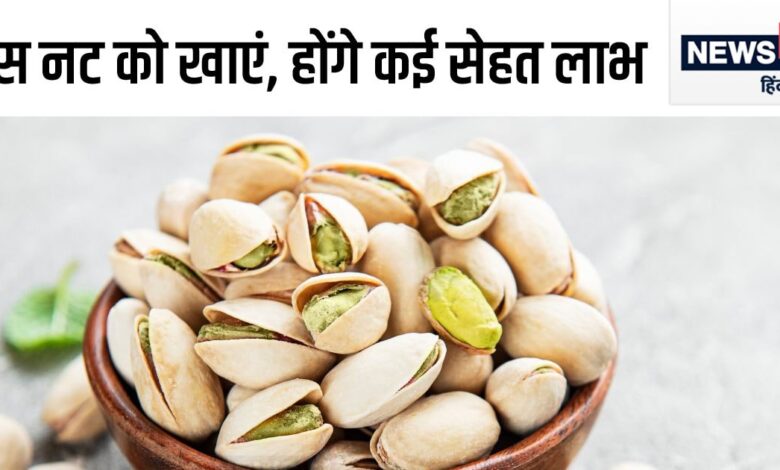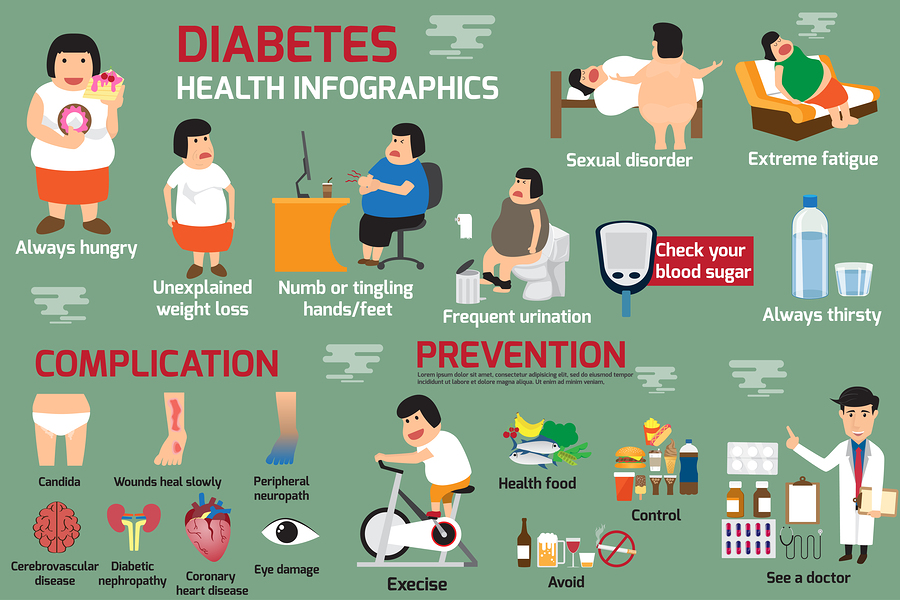
Benefits of Pistachios for Controlling Prediabetes
Benefits of pistachios for controlling prediabetes? It sounds almost too good to be true, right? A delicious, crunchy snack that might actually help manage your blood sugar? Believe it or not, there’s growing evidence suggesting that these little green gems could be a powerful ally in the fight against prediabetes. This post dives deep into the science-backed benefits of incorporating pistachios into a healthy diet, exploring everything from their nutritional profile to their impact on weight management and cardiovascular health.
Get ready to discover how this humble nut can make a big difference in your well-being!
We’ll unpack the nutritional powerhouse that is the pistachio, examining its fiber, healthy fats, and other beneficial components that contribute to blood sugar regulation. We’ll look at research showing how pistachios can influence fasting blood glucose, insulin sensitivity, and even HbA1c levels. Beyond blood sugar, we’ll also explore how pistachios can aid in weight management and improve cardiovascular health, offering practical tips and meal ideas to seamlessly integrate them into your daily life.
Let’s crack open the shell and see what’s inside!
Nutritional Profile of Pistachios: Benefits Of Pistachios For Controlling Prediabetes
Pistachios are more than just a delicious snack; they’re a nutritional powerhouse packed with benefits, particularly for those managing prediabetes. Understanding their nutritional makeup is key to appreciating their role in a blood sugar-friendly diet. This section delves into the specific nutrients found in pistachios and how they contribute to overall health and blood sugar control.
Macronutrient and Micronutrient Composition of Pistachios
The following table summarizes the approximate nutritional content of one serving of pistachios (about 30 grams or roughly 30-35 nuts), keeping in mind that slight variations may occur depending on the specific type and processing of the pistachios.
| Nutrient | Amount per Serving (approx.) | Unit | % Daily Value (approx.)* |
|---|---|---|---|
| Calories | 196 | kcal | – |
| Protein | 6 | g | 12% |
| Total Fat | 13 | g | 20% |
| Saturated Fat | 1 | g | 5% |
| Monounsaturated Fat | 7 | g | – |
| Polyunsaturated Fat | 4 | g | – |
| Carbohydrates | 8 | g | 3% |
| Dietary Fiber | 3 | g | 12% |
| Sugars | 1 | g | – |
| Vitamin B6 | 24% | %DV | – |
| Magnesium | 13% | %DV | – |
| Phosphorus | 11% | %DV | – |
| Potassium | 7% | %DV | – |
| Manganese | 10% | %DV | – |
| Copper | 6% | %DV | – |
Percent Daily Values (%DV) are based on a 2,000 calorie diet. Your daily values may be higher or lower depending on your calorie needs.
Beneficial Components for Blood Sugar Control, Benefits of pistachios for controlling prediabetes
Pistachios’ contribution to blood sugar management stems from a synergistic effect of several key components. The high fiber content, particularly insoluble fiber, helps slow down digestion and glucose absorption, preventing rapid spikes in blood sugar levels. The healthy fats, predominantly monounsaturated and polyunsaturated, also play a crucial role. These fats contribute to satiety, helping manage overall calorie intake and preventing overeating, which can lead to blood sugar fluctuations.
Furthermore, the presence of various micronutrients, such as magnesium, contributes to improved insulin sensitivity.
Comparison with Other Nuts and Seeds
While many nuts and seeds are beneficial for prediabetes management, pistachios offer a unique nutritional profile. Compared to almonds, which are also rich in healthy fats and fiber, pistachios generally have a slightly lower calorie count per serving. Compared to walnuts, known for their omega-3 fatty acids, pistachios offer a good balance of monounsaturated and polyunsaturated fats. Sunflower seeds, while containing beneficial nutrients, often have a higher carbohydrate content than pistachios.
Ultimately, the best choice depends on individual dietary needs and preferences, but pistachios offer a solid option within a balanced prediabetic diet.
Pistachios and Blood Sugar Regulation

Source: northamericannutra.com
Pistachios, those delightful little green nuts, are more than just a tasty snack. Emerging research suggests they may play a beneficial role in managing blood sugar levels, making them a potentially valuable addition to a prediabetes management plan. This isn’t about a magical cure, but rather a contribution to a holistic approach focused on balanced nutrition and lifestyle changes.
Let’s delve into the science behind this promising connection.
The potential of pistachios to help regulate blood sugar hinges on their unique nutritional profile. They’re a good source of fiber, both soluble and insoluble, which slows down the absorption of glucose into the bloodstream. This prevents those sharp spikes in blood sugar that are characteristic of prediabetes and type 2 diabetes. Furthermore, pistachios are rich in healthy monounsaturated fats, which, contrary to some misconceptions, can actually improve insulin sensitivity.
Improved insulin sensitivity means your body uses insulin more effectively, leading to better blood sugar control. The combination of fiber and healthy fats works synergistically to create a more sustained energy release and a smoother blood sugar curve.
Pistachio Integration into a Prediabetic Meal Plan
Incorporating pistachios into your diet doesn’t require a complete overhaul. Small, strategic additions can make a difference. The key is mindful portion control, as pistachios are calorie-dense. Here are a few ideas to inspire your culinary creativity:
A balanced meal plan incorporating pistachios should prioritize whole grains, lean proteins, and plenty of vegetables. The pistachios add a healthy fat source and fiber, enhancing the overall nutritional value and contributing to better blood sugar management.
- Breakfast: A small handful of pistachios (about 1 ounce) added to a bowl of oatmeal with berries and a sprinkle of cinnamon.
- Lunch: A salad with grilled chicken or fish, a variety of vegetables, and a sprinkle of pistachios for added crunch and healthy fats.
- Snack: A small serving of pistachios (about 1 ounce) paired with a piece of fruit, like an apple or pear.
- Dessert: A handful of pistachios incorporated into homemade energy balls with dates and other nuts.
Research Findings on Pistachio Consumption and Blood Sugar Control
Several studies have investigated the effects of pistachio consumption on various blood sugar markers in individuals with prediabetes. While more research is always needed, the existing evidence offers a promising outlook.
Pistachios are a fantastic snack for managing prediabetes, thanks to their fiber and healthy fats. Maintaining a healthy lifestyle is key, and that includes making informed decisions about our health, like Karishma Mehta did when she chose to freeze her eggs – check out this article on the process and associated risks: karishma mehta gets her eggs frozen know risks associated with egg freezing.
Ultimately, proactive health choices, whether it’s snacking smart with pistachios or planning for the future, contribute to a better overall well-being.
Note: The following is a summary of research findings and does not constitute medical advice. Consult with your healthcare provider before making significant dietary changes.
While specific dates and journal references are beyond the scope of this informal blog post, research generally shows a trend toward improvements in fasting blood glucose, insulin sensitivity, and HbA1c levels in prediabetic individuals who incorporate pistachios into their diet as part of a balanced eating plan. These improvements are often observed in conjunction with other lifestyle modifications, highlighting the importance of a holistic approach to managing prediabetes.
Impact on Weight Management
Maintaining a healthy weight is crucial for managing prediabetes and preventing the progression to type 2 diabetes. Excess weight strains the body’s ability to regulate blood sugar effectively, increasing insulin resistance. Pistachios, with their unique nutritional profile, can play a beneficial role in weight management strategies for individuals with prediabetes.Pistachios contribute to weight loss or maintenance through a combination of factors.
Their relatively low calorie density means you can enjoy a satisfying serving without consuming excessive calories. Furthermore, the high fiber and protein content promotes a feeling of fullness, reducing overall calorie intake throughout the day. This satiety effect is vital in preventing overeating and unhealthy snacking, common challenges for those managing their weight.
High Fiber and Protein Content Promotes Satiety
The high fiber content in pistachios helps regulate blood sugar levels by slowing down the absorption of glucose into the bloodstream. This prevents the sharp spikes and crashes in blood sugar that can lead to increased hunger and cravings. The protein in pistachios also contributes to satiety by promoting feelings of fullness and reducing appetite. Studies have shown that diets rich in protein and fiber are more effective for weight management than those lacking these essential nutrients.
Pistachios are amazing for managing prediabetes – their healthy fats and fiber help regulate blood sugar. It’s fascinating to see how medical breakthroughs are happening, like the recent news that the fda approves clinical trials for pig kidney transplants in humans , which shows incredible advancements in medicine. Getting back to pistachios, incorporating them into a balanced diet can be a really effective, natural way to support your body’s ability to manage blood sugar levels.
For example, a study published in the
Journal of the American College of Nutrition* found that participants consuming a diet higher in protein experienced greater weight loss and improved satiety compared to those on a lower-protein diet.
Sample One-Week Meal Plan Incorporating Pistachios
This sample meal plan demonstrates how to incorporate pistachios into a balanced diet for weight management in prediabetes. Remember that portion control is key, and individual needs may vary. Consult with a healthcare professional or registered dietitian to personalize your meal plan.
Pistachios are a great snack for managing prediabetes, thanks to their fiber and healthy fats. Maintaining good overall health is crucial, and that includes brain health; I was reading an interesting article on how an eye test might help predict dementia risk – check it out: can eye test detect dementia risk in older adults. Getting regular checkups and making healthy choices, like snacking on pistachios, are key to keeping yourself in tip-top shape, both physically and mentally.
| Day | Breakfast | Lunch | Dinner |
|---|---|---|---|
| Monday | Greek yogurt with 1/4 cup pistachios and berries | Salad with grilled chicken or fish, 1/8 cup pistachios | Baked salmon with roasted vegetables and a small handful of pistachios |
| Tuesday | Oatmeal with 1/8 cup pistachios and a banana | Lentil soup with whole-wheat bread and 1/8 cup pistachios | Chicken stir-fry with brown rice and a small handful of pistachios |
| Wednesday | Scrambled eggs with whole-wheat toast and 1/8 cup pistachios | Turkey breast sandwich on whole-wheat bread with lettuce, tomato, and 1/8 cup pistachios | Lean ground beef and vegetable skillet with quinoa and a small handful of pistachios |
| Thursday | Smoothie with spinach, banana, protein powder, and 1/8 cup pistachios | Leftovers from dinner | Vegetarian chili with whole-wheat crackers and a small handful of pistachios |
| Friday | Greek yogurt with 1/4 cup pistachios and fruit | Salad with chickpeas, avocado, and 1/8 cup pistachios | Baked chicken breast with sweet potato and green beans and a small handful of pistachios |
| Saturday | Whole-wheat pancakes with berries and 1/8 cup pistachios | Leftovers from dinner | Pizza with whole-wheat crust, vegetables, and lean protein (limit cheese) with a small handful of pistachios |
| Sunday | Omelet with vegetables and 1/8 cup pistachios | Leftovers from dinner | Roast chicken with roasted vegetables and a small handful of pistachios |
Pistachios and Cardiovascular Health

Source: blogspot.com
Prediabetes, a condition where blood sugar levels are higher than normal but not yet high enough for a type 2 diabetes diagnosis, significantly increases your risk of developing cardiovascular disease. This is because high blood sugar damages blood vessels over time, leading to complications like atherosclerosis (hardening of the arteries) and increased risk of heart attack and stroke. Fortunately, incorporating certain foods into your diet, like pistachios, can help mitigate these risks.Pistachios offer several mechanisms to improve cardiovascular health, particularly in individuals with prediabetes.
Their beneficial effects stem from a combination of factors, working synergistically to reduce cardiovascular risk factors. By addressing several key areas, pistachios can contribute to a healthier heart.
Beneficial Components of Pistachios for Cardiovascular Health
Pistachios are rich in monounsaturated fats, specifically oleic acid, the same healthy fat found in olive oil. These fats help lower LDL (“bad”) cholesterol and raise HDL (“good”) cholesterol, a crucial factor in preventing atherosclerosis. Beyond fats, pistachios are a good source of antioxidants, including vitamin E and various phytochemicals. Antioxidants combat oxidative stress, a process that damages blood vessels and contributes to inflammation, both key players in the development of cardiovascular disease.
The fiber content in pistachios also plays a role, helping to regulate blood sugar levels and improve overall digestive health, which indirectly benefits cardiovascular health.
Comparison of Cardiovascular Benefits Across Different Nuts
Understanding the comparative benefits of various nuts helps us appreciate the unique contributions of pistachios. While many nuts offer heart-healthy benefits, their profiles differ.Let’s compare pistachios to almonds and walnuts:
- Pistachios: High in monounsaturated fats, good source of antioxidants (vitamin E, phytochemicals), and fiber. They also offer a relatively lower calorie count per serving compared to some other nuts.
- Almonds: Rich in vitamin E and other antioxidants, a good source of fiber and monounsaturated fats. However, they tend to have a slightly higher calorie density than pistachios.
- Walnuts: Excellent source of omega-3 fatty acids (alpha-linolenic acid), which are known for their anti-inflammatory properties and beneficial effects on heart health. However, they are also higher in calories and fat compared to pistachios.
It’s important to note that all three nuts offer valuable contributions to cardiovascular health. The optimal choice depends on individual dietary needs and preferences. However, the combination of monounsaturated fats, antioxidants, and relatively lower calorie density makes pistachios a particularly appealing option for individuals managing prediabetes and aiming to improve their cardiovascular health.
Practical Considerations and Potential Limitations

Source: news18.com
While pistachios offer numerous benefits for individuals with prediabetes, it’s crucial to acknowledge potential limitations and incorporate them safely into a balanced diet. Understanding these factors will ensure that you maximize the positive effects of pistachios while minimizing any risks. This section will address potential concerns and provide practical guidance for safe and effective pistachio consumption.
Allergies and Medication Interactions
Pistachios, like other nuts, can trigger allergic reactions in susceptible individuals. Symptoms can range from mild (itching, rash) to severe (anaphylaxis), requiring immediate medical attention. Before incorporating pistachios into your diet, especially if you have a history of nut allergies or other food sensitivities, it’s essential to consult with your doctor or allergist. Furthermore, some medications may interact with the components of pistachios.
For example, blood thinners may interact with vitamin K found in pistachios. Always discuss any dietary changes, including the addition of pistachios, with your physician, particularly if you are taking medication.
Safe and Effective Incorporation into a Prediabetic Diet
Integrating pistachios into a prediabetic diet requires careful planning to ensure optimal benefits. Portion control is vital to avoid excessive calorie intake, which can hinder weight management efforts. The high fat content of pistachios, while beneficial in some aspects, still contributes to overall caloric density. Therefore, mindful consumption is key. Aim for a balanced approach, incorporating pistachios as part of a broader dietary strategy that emphasizes whole grains, lean protein, fruits, and vegetables.
Recommended Portion Sizes and Frequency
A typical serving of pistachios is approximately 1 ounce, or about 30-35 nuts. This amount provides a good source of healthy fats, fiber, and protein without significantly impacting blood sugar levels. Visualize a small, loosely-held handful – that’s roughly the right amount. Think of it as filling the palm of your hand, excluding the fingers. It’s about the volume of a standard golf ball.
Consuming this serving size 2-3 times per week is generally considered safe and effective. Remember, consistency is key. Regular, moderate consumption is more beneficial than sporadic, large portions. Overconsumption can lead to weight gain and negate the positive effects.
Final Review
So, are pistachios a miracle cure for prediabetes? Not exactly, but they’re definitely a powerful tool in your arsenal. By understanding their nutritional benefits and incorporating them strategically into your diet, you can contribute significantly to better blood sugar control, weight management, and overall cardiovascular health. Remember, this is part of a holistic approach – combining pistachios with a balanced diet, regular exercise, and medical guidance is key.
But hey, at least you can enjoy a tasty, satisfying snack along the way! Start adding pistachios to your meals and see the positive difference for yourself. Your body (and taste buds) will thank you!
FAQs
Are there any potential side effects of eating too many pistachios?
While generally safe, consuming excessive amounts of pistachios can lead to weight gain if not balanced with overall calorie intake. Also, some individuals may have allergies to pistachios.
Can I eat pistachios if I’m on medication for prediabetes?
It’s crucial to consult your doctor or a registered dietitian before making significant dietary changes, especially if you’re on medication. They can advise on how to safely incorporate pistachios into your plan.
How many pistachios should I eat per day?
A typical serving size is around 1 ounce (about 30 pistachios), but it’s best to follow your doctor or dietitian’s recommendations based on your individual needs.
Are roasted pistachios as beneficial as raw pistachios?
While both offer nutritional value, raw pistachios generally retain more of their nutrients. However, the difference is often minimal, and roasted pistachios can still be part of a healthy diet in moderation.
